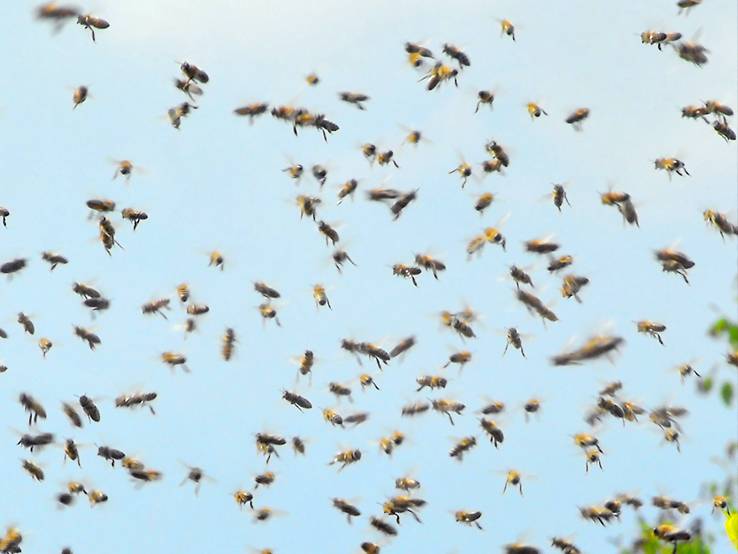Explanation of Bee Swams
Stop! Don't kill the bees with pesticide! Bees do a lot for our environment, killing them while theres a solution where you don't have to kill is easily the safer and better option for you and for the bees.
Contact your local council to get in contact with a trusted Apiarist or experienced Beekeeper.
See the North Shore Beekeepers Association.org.au for explanation of bee swarms.

Swarming Bees
Please go to the bottom of the page or go to North Shore Beekeepers association to find a list of bee collectors in Northern Sydney.
A natural instinct of a bee colony is to swarm and leave its hive to establish another colony elsewhere. This is the way that bees increase their numbers to survive as a species. Swarms normally occur in the spring and early summer months, but can happen at any time of year, with winter being the least likely. When bees swarm, they move out of the hive and fly to a new temporary location on a post, tree or fence in your backyard.
Once the swarm of bees has landed and settled, it clusters into a tight ball, which can vary in size from 200- 600mm in diameter. The bees will stay in this temporary location until a new permanent home is found and then the whole swarm will fly away again. The temporary location may be used for as little as two hours but may be up to two days.
Is a Bee Swarm dangerous?
Swarming bees are not likely to attack and sting unless they are provoked by some sort of interference. There are a couple of reasons for this docile behavior. While they are swarming and are temporarily settled, there are scout bees out looking for a new home and in their minds the swarm does not have a home to protect, so defensive behavior patterns are suspended until the new home is found.
Another reason swarm bees are docile is that they leave their original home with bellies full of honey and this limits their lower body movement making it difficult to successfully sting.
If a swarm of bees arrives at your house, stay inside till the swarm has clustered and most of the bees have stopped flying. Watch for foraging bees flying to and from the swarm, as they may not see you and could get caught in your hair or clothing.
When you go outside, wear footwear to protect your feet in case some bees have landed on the ground.
What not to do
Do not attempt to move the swarm by hosing it, throwing stones at it, or poking it with a stick. This action will only aggravate the bees and encourage them to sting in defense.
It is safest to not attempt to remove a swarm yourself unless you have experience in handling bees.
Removal of swarms
North Shore Beekeepers Association is made up mostly of hobby beekeepers and the removal of swarms is usually free of charge. A small donation to the club is always appreciated but is not mandatory. A phone call to any of our members listed below ensures that you will receive prompt service.
If the bees to be removed are already an established colony in a wall or some container in your garden, removal may entail some hours of work and you should ask about cost before allowing the bees to be moved.
In every case, (swarm or established colony), confirm the cost before agreeing to the removal.
Beekeepers removing swarms will almost always charge less than that typically charged by a pest controller, with the advantage that rather than killing them, the bees will be relocated.


